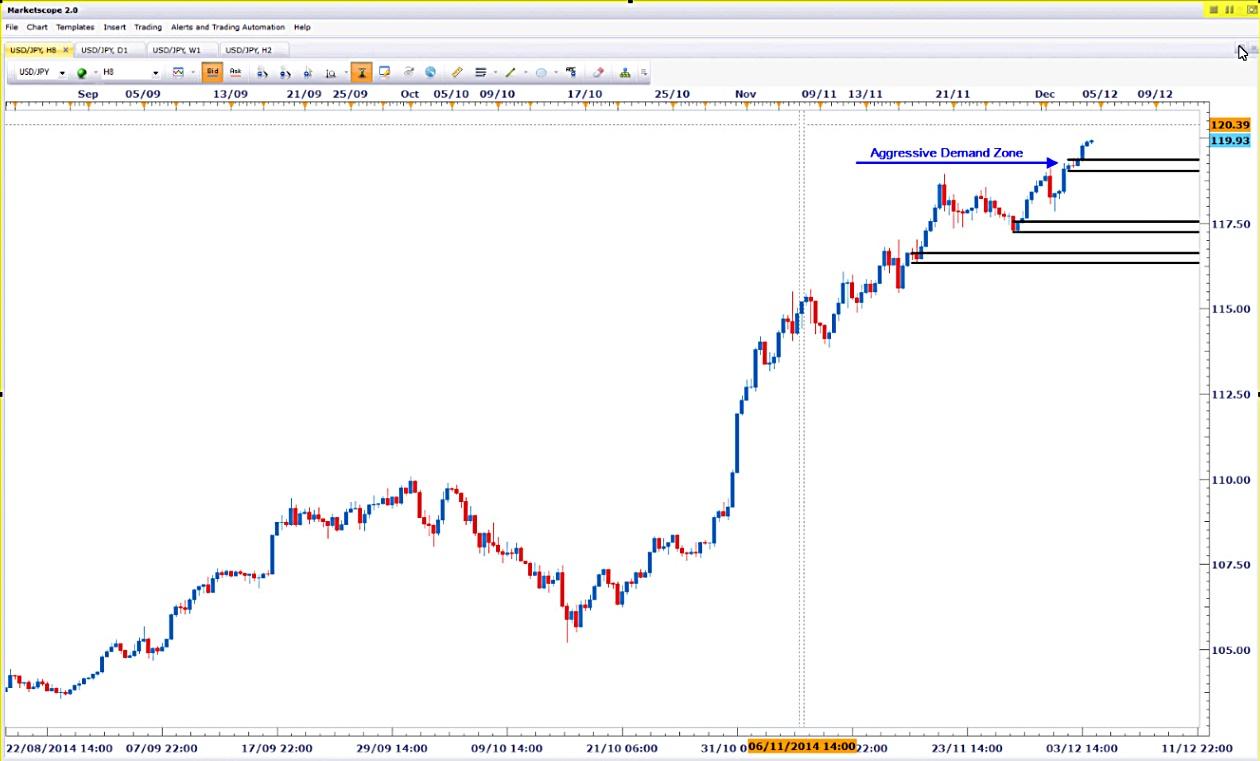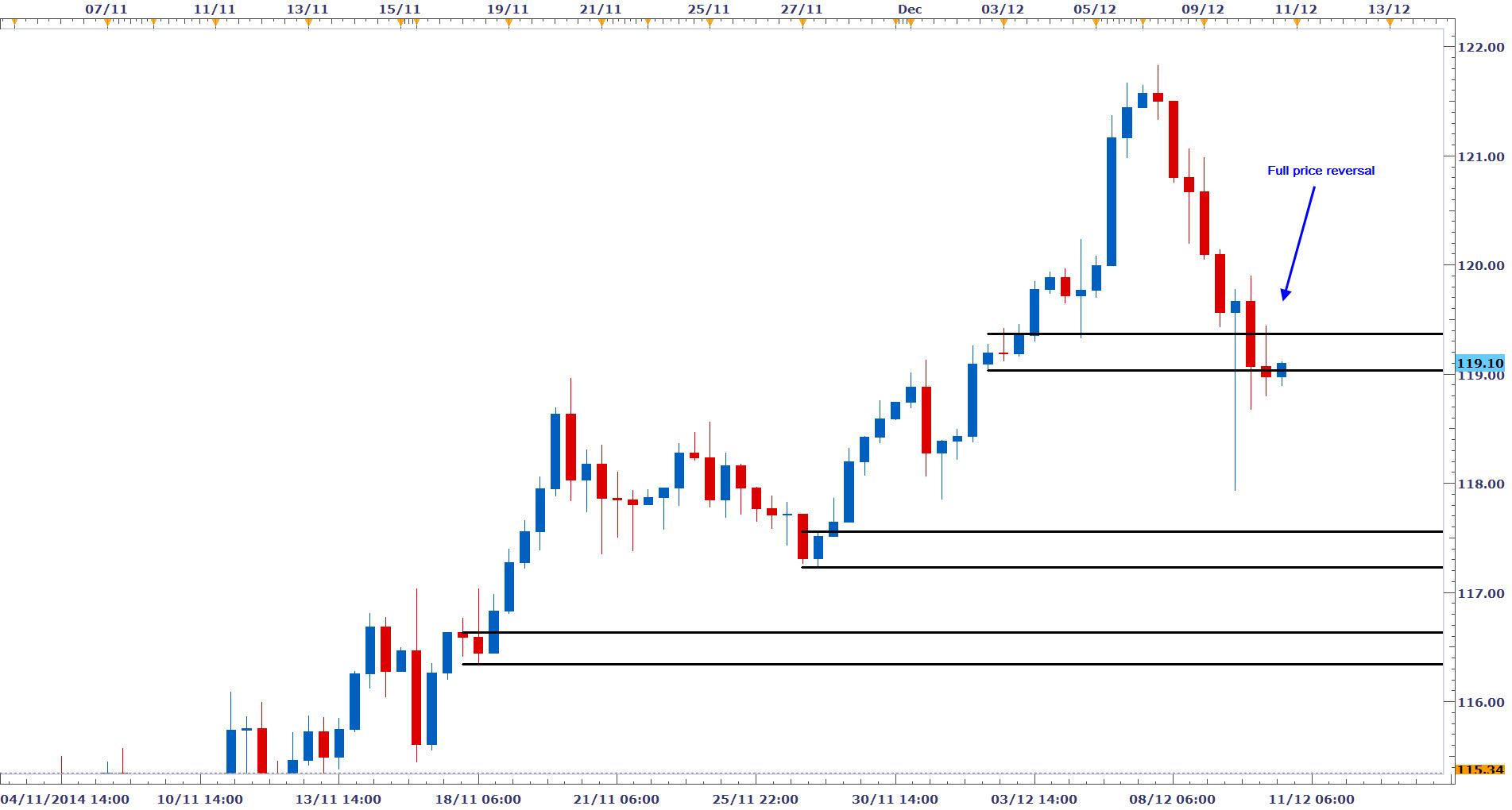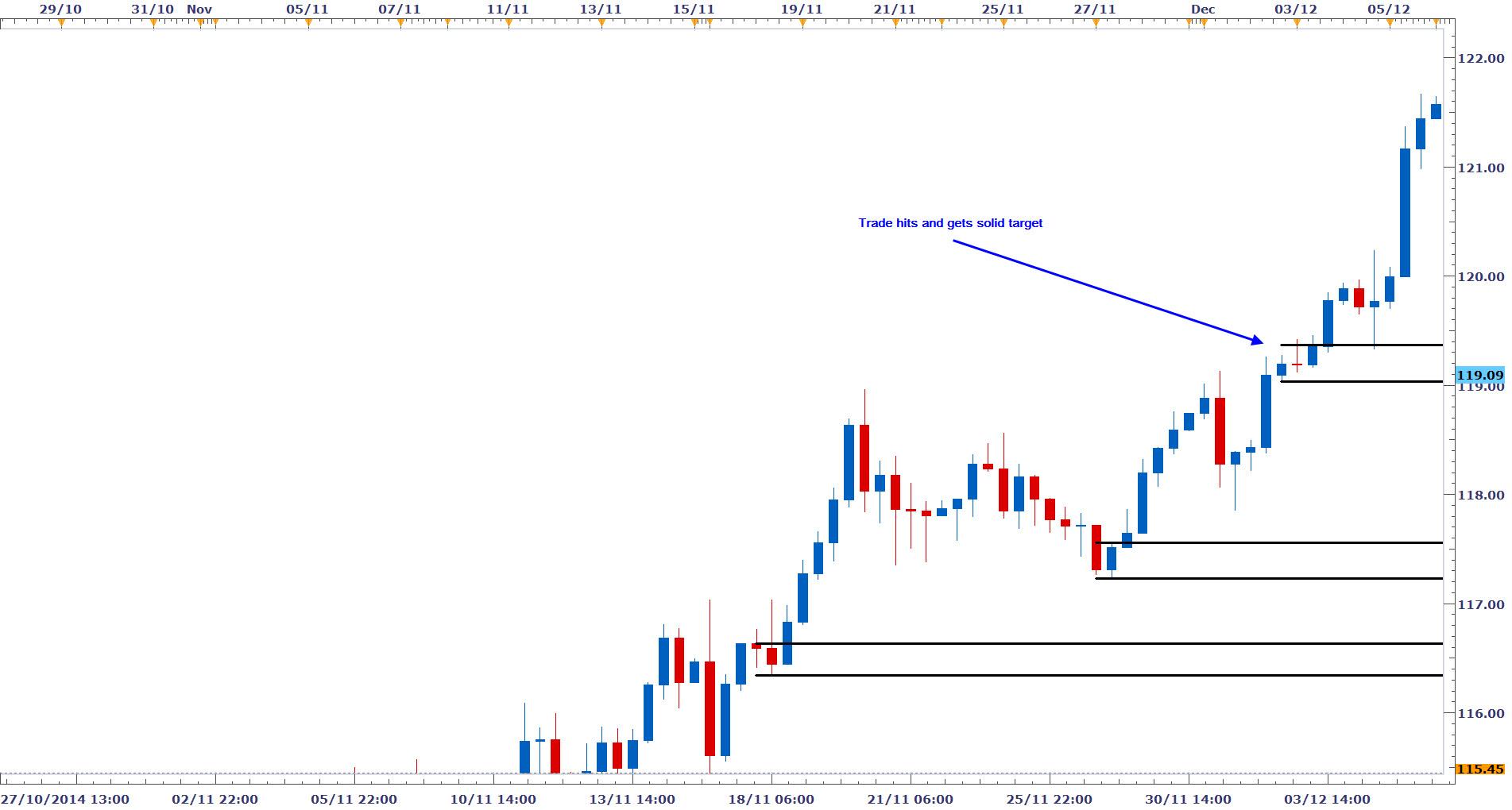![]()
Many years ago in the very first trading class I ever took, my instructor told us a vital truth about the markets: Trading is simple but far from easy. Looking back I don’t think I really took much notice of the vital importance behind what he said to us all in the classroom that day. I was more interested in getting to the “good stuff,” that being the strategies and the charts! Now, some eleven years later it really makes complete and utter sense to me. In fact, I make a point of telling my own students the exact same thing whenever I am teaching them the ways of trading.
The simplicity of trading for short term income or long term wealth generation is really down to the basic dynamics concerned with how to actually trade in an effective, objective and logical manner. Let’s face it there are only three things you can do in the market after all, that is buy it, sell it or do nothing. It doesn’t get much simpler that that, does it? Once you are in a trade you have to decide for yourself what you are going to do next. This is the more complex part. Obviously you are either going to win on the trade, lose on it or maybe break even from time to time but whatever the outcome, this is the one true unknown element and thus, is what makes the act of trading not so easy.
You see, as human beings going about our daily lives, we have become used to having a high degree of certainty running throughout our existence as we go about our daily business. Of course Murphy’s Law suggests that if anything can happen, it will happen but again we are still fairly comfortable in knowing that many events which transpire in our lives have fairly predictable outcomes. We have gotten used to pretty much knowing what is going to happen next in most aspects of our lives and have taken a deep-rooted level of comfort in this habitual awareness. Therefore, I would suggest that when it comes to trading, the majority of people find a huge challenge in not knowing what is going to happen next.
Of course the markets are rather predictable to a certain extent, firstly because if they weren’t nobody would make any money out of them and secondly because they are created by none other than human beings, which we have already recognised as being creatures of habit and repetition. Taking these two factors into account is what makes it possible to make consistent gains from today’s markets if a solid and disciplined trade plan is followed to the letter. We must accept the unknown variables that the FX market is happy to throw our way on a daily basis and also understand that there will always be things that we never have any control over whatsoever. There are on the other hand, things that we can control and must do so efficiently so as to account for the unknown and keep our emotions in check at all times.
I can’t control how far the market will move for me when I am on the right side of a trade. This is one of those big unknowns which makes trading not so easy. What though, can we do to compensate for this? Well straight away we can control our losses by deciding in advance exactly how much we are prepared to lose if the trade fails. Secondly, we can also go for achievable profit targets on the trades we decide to take. I like to encourage my students to “grab the low-hanging fruit” on their positions, meaning that they should train themselves to not be too greedy and going for unachievable targets. This too often results in gaining large chunks of upside potential gains, only to then watch them be given back and ending up with nothing or maybe even a small loss at the end of the trade. This is a common mistake by many traders and definitely is an issue which tends to contribute to the “not easy” scenario. To keep things simple and as effective as possible, we must overcome any potential hurdles on our trades well before we face them. Objective and unemotional profit-taking is one such example of how to do this.
Let me reference a recent example from one of my more current XLT sessions I was leading for Online Trading Academy. Using our patented Core Strategy to recognize imbalances between supply and demand created by institutional order flow, the class had decided to do some real-time analysis and trading setups on the USDJPY currency pair. As you may be well aware, the USDJPY has been enjoying a tremendous ride to the upside as of late and there were students looking to capitalize on this price action. While I have no problem with joining a trend, I also like to be aware of where trend is likely to end, especially when the trend in question has been running for quite some time. Taking this into account I found opportunity to buy the pair at a recently formed institutional demand zone as shown in the screenshot below:
Having highlighted the level in advance, we simply then needed to wait for price to come to us, then buying the pair and placing a stop loss order below the zone in the event that the trade did not work out as we expected; the only thing left to work out then was the profit objective. It was suggested by a few of the students that we should let the trade run as far as possible, allowing the trend to continue to develop. Now, while this was a decent plan to have, it also relied on the trend being able to continue. In this trade the charts were suggesting that there was a major level of supply a few hundred pips above our demand zone (not shown on this example), thus limiting our profit potential a little. I suggested taking a conservative 3:1 reward to risk on the trade and to set up a shorting opportunity at the higher supply level for if price ever got there. After all, 3:1 is always a solid outcome for a trade. The trade triggered as expected sometime later:
As we can see, the zone was hit and price rallied considerably from our level of demand, giving us a solid profit. The speed of the move away with such momentum can make it hard to want to close the trade out, as it makes us think it will carry on moving in our favor. While this is always possible, we must remember that this is also a huge unknown, suggesting that we should take a decent profit and move on to the next trade when it presents itself to us. Nobody ever went broke from taking decent profits from the market after all. As we can see below, closing out our position was a wise thing to do:
If we had not closed out the trade, most, if not all of the profit would have been sacrificed. Maybe even a loss would have been incurred. No matter the variables, it must be noticed that the easy profit was there and had to have been taken. Throughout the years of my own trading, I have been good with some things and bad with others. I can safely say though that one of the biggest challenges I had to overcome was that of learning to take a profit, ironic really when you think about it as what else is the reason for trading in the first place other than taking a profit? When I kept records and got consistently better at finding decent trades, I soon learned that if I took the smart profits off the table when I had the chance to do so, I made money consistently. When I didn’t, well I think you know the story…Yes we all want the most out of trades when we take them but we never really know how far they will run, so why not take a profit that is possible rather than hold out for a payday that’s never coming? I hope this makes an impact in your results moving forward.
Note: All information on this page is subject to change. The use of this website constitutes acceptance of our user agreement. Please read our privacy policy and legal disclaimer. Opinions expressed at FXstreet.com are those of the individual authors and do not necessarily represent the opinion of FXstreet.com or its management. Risk Disclosure: Trading foreign exchange on margin carries a high level of risk, and may not be suitable for all investors. The high degree of leverage can work against you as well as for you. Before deciding to invest in foreign exchange you should carefully consider your investment objectives, level of experience, and risk appetite. The possibility exists that you could sustain a loss of some or all of your initial investment and therefore you should not invest money that you cannot afford to lose. You should be aware of all the risks associated with foreign exchange trading, and seek advice from an independent financial advisor if you have any doubts.
Editors’ Picks

GBP/USD bulls retain control near 1.3300 mark, highest since March 2022
The GBP/USD pair trades with a positive bias for the third straight day on Friday and hovers around the 1.3300 mark during the Asian session, just below its highest level since March 2022 touched the previous day.

USD/JPY pops and drops on BoJ's expected hold
USD/JPY reverses a knee-jerk spike to 142.80 and returns to the red below 142.50 after the Bank of Japan announced on Friday that it maintained the short-term rate target in the range of 0.15%-0.25%, as widely expected. Governor Ueda's press conference is next in focus.

Gold consolidates weekly gains, with sight on $2,600 and beyond
Gold price is looking to build on the previous day’s rebound early Friday, consolidating weekly gains amid the overnight weakness in the US Dollar alongside the US Treasury bond yields. Traders now await the speeches from US Federal Reserve monetary policymakers for fresh hints on the central bank’s path forward on interest rates.

Shiba Inu is poised for a rally as price action and on-chain metrics signal bullish momentum
Shiba Inu remains strong on Friday after breaking above a symmetrical triangle pattern on Thursday. This breakout signals bullish momentum, further bolstered by a rise in daily new transactions that suggests a potential rally in the coming days.

Bank of Japan set to keep rates on hold after July’s hike shocked markets
The Bank of Japan is expected to keep its short-term interest rate target between 0.15% and 0.25% on Friday, following the conclusion of its two-day monetary policy review. The decision is set to be announced during the early Asian session.
RECOMMENDED LESSONS
Making money in forex is easy if you know how the bankers trade!
Discover how to make money in forex is easy if you know how the bankers trade!
5 Forex News Events You Need To Know
In the fast moving world of currency markets, it is extremely important for new traders to know the list of important forex news...
Top 10 Chart Patterns Every Trader Should Know
Chart patterns are one of the most effective trading tools for a trader. They are pure price-action, and form on the basis of underlying buying and...
7 Ways to Avoid Forex Scams
The forex industry is recently seeing more and more scams. Here are 7 ways to avoid losing your money in such scams: Forex scams are becoming frequent. Michael Greenberg reports on luxurious expenses, including a submarine bought from the money taken from forex traders. Here’s another report of a forex fraud. So, how can we avoid falling in such forex scams?
What Are the 10 Fatal Mistakes Traders Make
Trading is exciting. Trading is hard. Trading is extremely hard. Some say that it takes more than 10,000 hours to master. Others believe that trading is the way to quick riches. They might be both wrong. What is important to know that no matter how experienced you are, mistakes will be part of the trading process.

Moneta Markets review 2024: All you need to know
VERIFIED In this review, the FXStreet team provides an independent and thorough analysis based on direct testing and real experiences with Moneta Markets – an excellent broker for novice to intermediate forex traders who want to broaden their knowledge base.



